Van Gogh & Japan
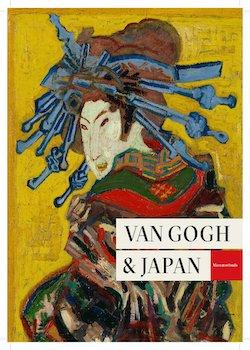
Catalogue for an exhibition held from
23 March to 24 June 2018 at the Van Gogh Museum in Amsterdam
Van Gogh Museum, Hokkaido Shimbun Press,
Mercatorfonds – distributed by Yale University Press, 2018
ISBN-13: 978-0300233261
Review by Sir Hugh Cortazzi
I was unable to get to Amsterdam to see this exhibition, but I bought this fine exhibition catalogue of works by Van Gogh and of Japanese prints that inspired him. Although a catalogue, however good, is not an adequate substitute for viewing a picture with one’s own eyes, this is a book which all admirers of Van Gogh as an artist and anyone interested in learning more about Japanese influence on western art will want to add to their library.
The scholarly essays in this catalogue include ‘The beginnings of the “Japanese Dream”: Van Gogh’s acquaintance with Japan’, ‘In the light of Japan: Van Gogh’s quest for happiness and a modern identity’, ‘Van Gogh’s Japan: Embracing an idea’, ‘After the dream: Van Gogh and Japan in his last months in Paris and Auvers-sur-Oise’, ‘Van Gogh’s Japanese prints: From dealer’s stock to artist’s collection’ and ‘Chronology: Van Gogh and Japanese Art’. The book also contains a bibliography and list of the works exhibited.
In the winter of 1886-1887 Van Gogh bought from the art dealer Siegfried Bing for 100 francs 660 Japanese prints. He made a down payment of ten francs, but never paid the ninety francs he owed Bing. This seems to have been an impulsive purchase. The prints were, Van Gogh recognized, ‘run-of –the-mill’ prints with an average price of three sous, which at the time was the equivalent of the price of an aperitif. Almost all the prints he bought are now in the Van Gogh museum in Amsterdam. Japanese artists whose prints feature particularly often in the collection were Kunisada, Kuniyoshi and Hiroshige. Hiroshige was the Japanese artists whose prints first attracted the attention of the impressionists and early western connoisseurs of Japanese art. Van Gogh’s collection did not include any prints by Hokusai although he must have seen many Hokusai prints and recognized the incomparable genius of the latter’s prints.
The catalogue shows how much Van Gogh was inspired and influenced by Japanese prints and by the image of Japan which was reflected in the Japanese prints in his collection. Van Gogh was never a copyist nor derivative artist. Even his famous ‘reproduction’ of a Hiroshige print of a bridge in the rain is much more than just a copy.
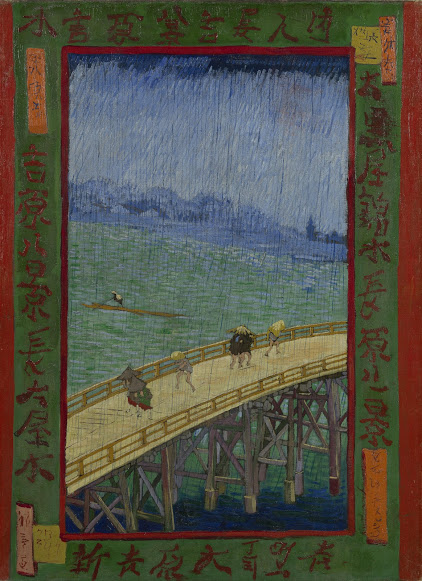
Vincent van Gogh (1853 – 1890),
Paris, October-November 1887
Van Gogh Museum, Amsterdam
(Vincent van Gogh Foundation)
The vibrant colours of Japanese prints stimulated his imagination and the strong sunlight of southern France made him think he was in the Japan of his dreams. Some of his paintings were of subjects beloved by Japanese artists such as this painting of a peach in blossom.
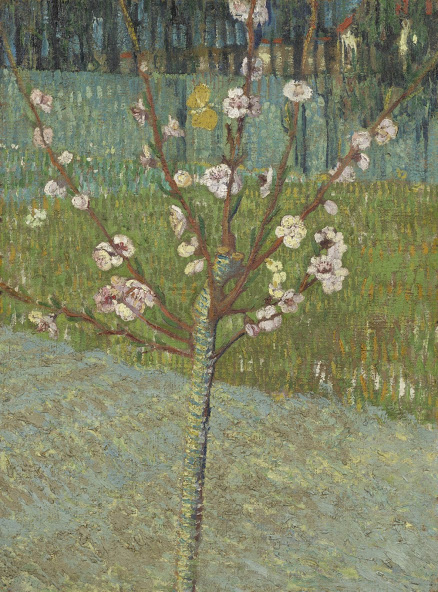
Vincent van Gogh, Arles, April 1888
Van Gogh Museum
Or these:
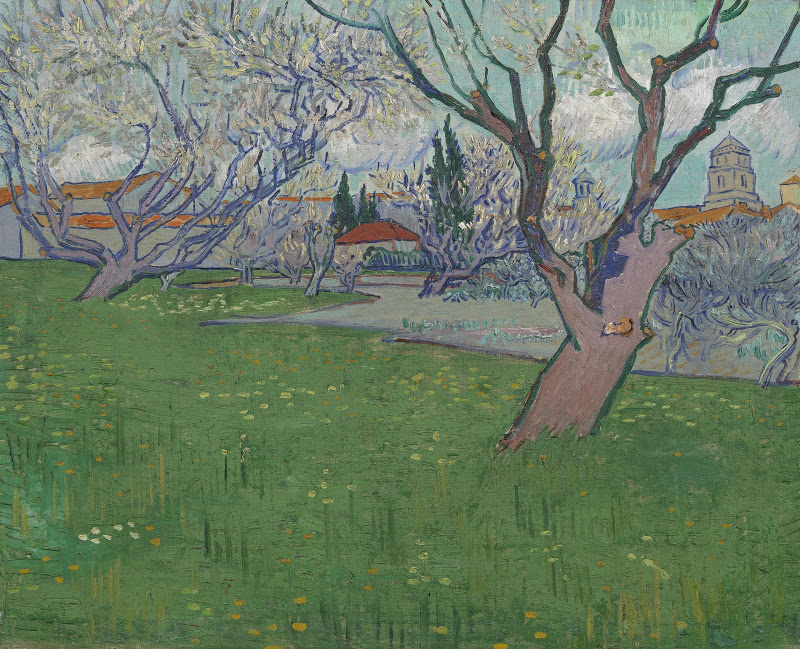
Vincent van Gogh, Arles, April 1889
Van Gogh Museum
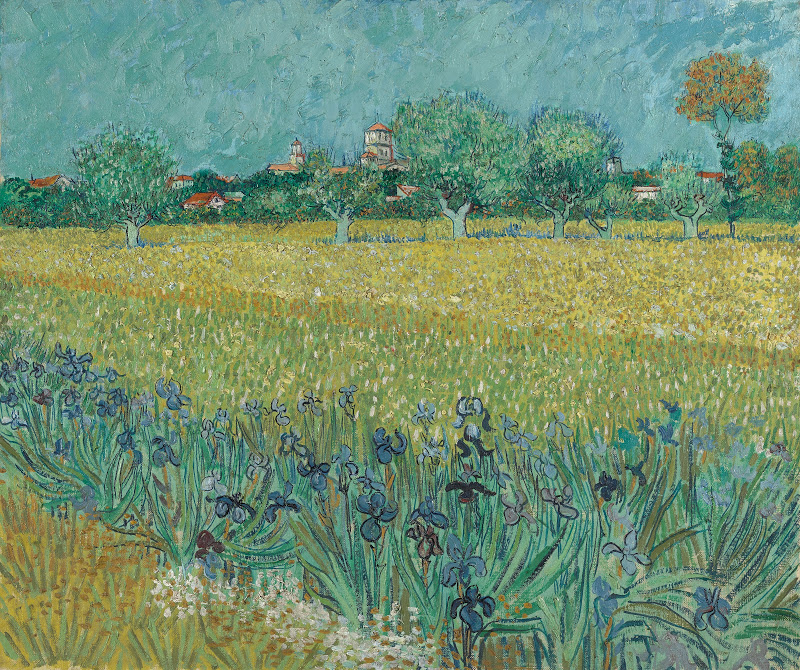
Vincent van Gogh, Arles, May 1888
Van Gogh Museum
The way Japanese artists painted seascapes was reflected in some of his paintings of boats such as this one of St Marie de la mer:
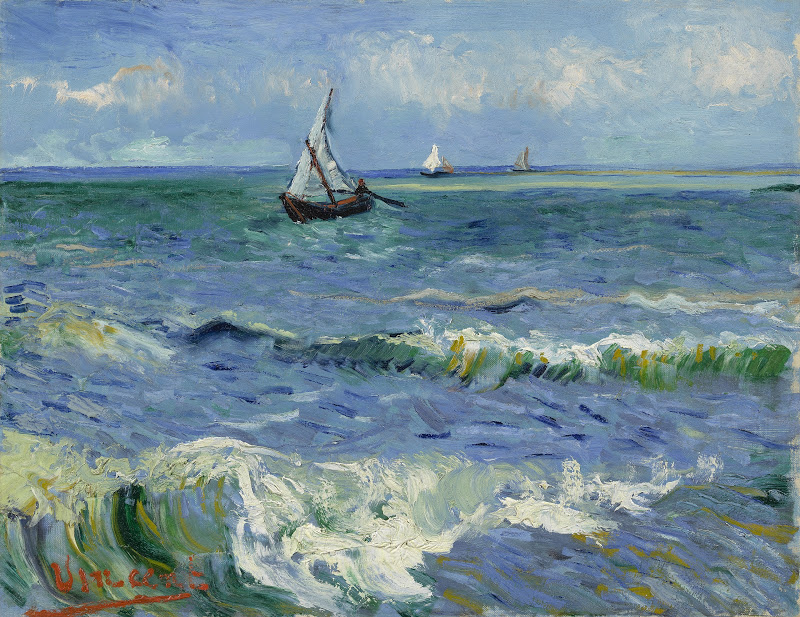
Vincent van Gogh, Arles, June 1888
Van Gogh Museum
This painting of the garden of St Paul’s Hospital of 1889 surely was inspired by the way Japanese artists depicted trees.
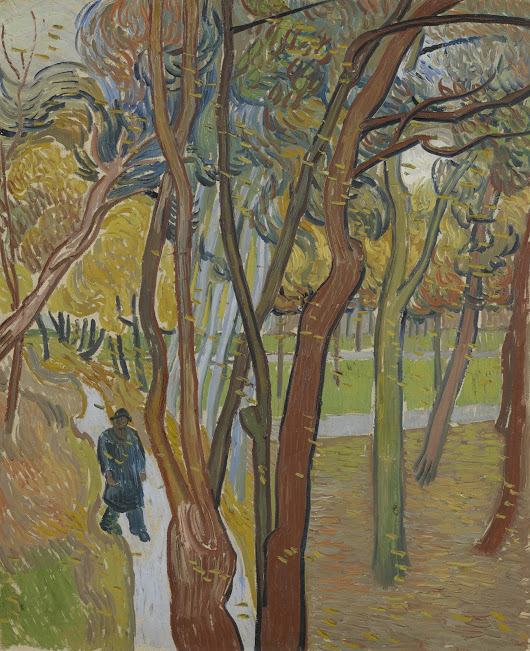
Vincent van Gogh, Saint-Rémy-de-Provence, October 1889
Van Gogh Museum
Van Gogh’s kingfisher by the waterside in oils on canvas could have been found in a Japanese album of bird prints and his painting in oils also of 1887 of a crab on its back could have been inspired by a Japanese print.
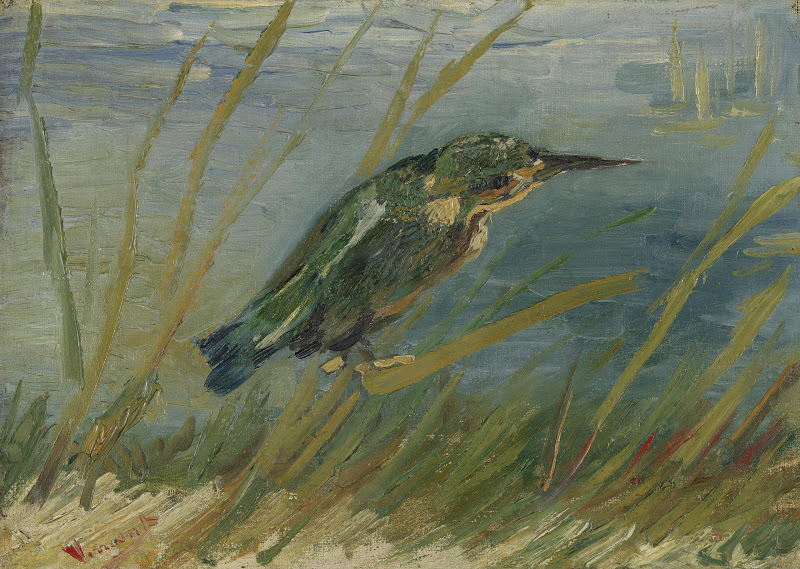
Vincent van Gogh, Paris, July-August 1887
Van Gogh Museum
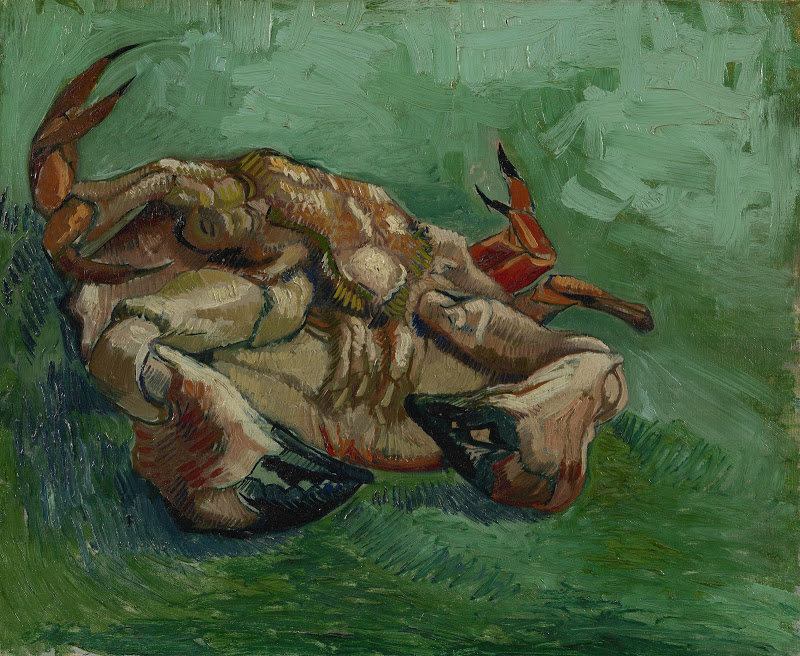
Vincent van Gogh, Paris, August-September 1887
Van Gogh Museum
The way in which Japanese artists portrayed their human subjects in their prints inspired Van Gogh as can be seen in his painting of a peasant woman perhaps influenced by the way in which Japanese peasant women were depicted.
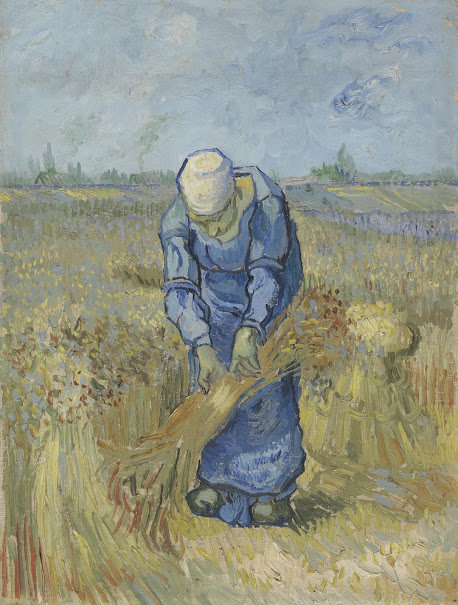
Vincent van Gogh, Saint-Rémy-de-Provence, September 1889
Van Gogh Museum
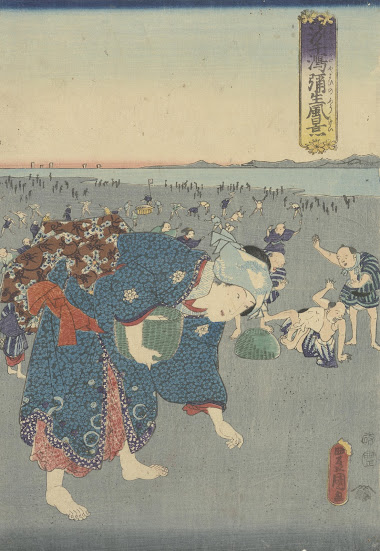
right sheet of the triptych
View on the Tideland in the Third Month
Edo, first month 1855
Utagawa Kunisada (1786 – 1865)
Van Gogh Museum
In a brief review only a few of the fascinating images in this catalogue can be reproduced but I hope that the few I have chosen above will inspire readers to seek out copies of this catalogue and go to the Van Gogh Museum when they visit Amsterdam next.

